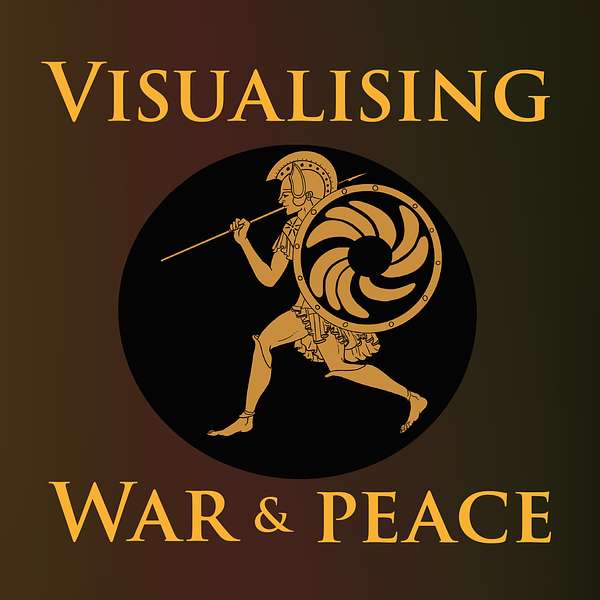
Visualising War and Peace
How do war stories work? And what do they do to us? Join University of St Andrews historian Alice König and colleagues as they explore how war and peace get presented in art, text, film and music. With the help of expert guests, they unpick conflict stories from all sorts of different periods and places. And they ask how the tales we tell and the pictures we paint of peace and war influence us as individuals and shape the societies we live in.
Visualising War and Peace
Images at war: conflict, peace and photography in Sri Lanka
In this episode, Alice interviews Dr Vindhya Buthpitiya, a St Andrews-based anthropologist who works at the intersection between conflict and visual culture. Her research focuses particularly on the production and circulation of images within the context of the Sri Lankan civil war, and she has published a wide range of articles looking at both photography and cinema, and the roles that they can play in documenting ethno-nationalist conflict and facilitating civilian resistance. Her work has lots to teach us about the evolution of different technologies and practices for visualising, remembering, preventing and generating conflict, and the ways in which even personal photography can be co-opted in times of war/post-war for political ends.
In the podcast, Vindhya explains the background to Sri Lanka's civil war; the contours of the conflict from 1983-2009; and some of the human rights violations and war crimes committed on both sides. She also reflects on the fragility of the 'peace', declared by the Sri Lankan state but not recognised or experienced by everyone on the ground, thanks to ongoing securitisation and a lack of post-conflict justice, among other challenges. Alongside this, she also documents the changing history of photography in Sri Lanka, from the 1970s to the present day, and discusses how photographic practices have intersected over time with the dynamics of the civil war.
Vindhya discusses several genres of photography from this period: atrocity photographs, domestic/family footage, official ID photos, and images used in memorialisation. In outlining the various ways in which both Tamils and the Sri Lankan state weaponised atrocity images, she helps us grasp the ways in which photography can both legitimise and help to generate violence: by enlisting new people to a cause, heroising sacrifice, dehumanising the enemy, making violence seem spectacular, and socialising the civilian population to support and even celebrate war.
We talk about the advent of phone cameras and the switch from analogue to digital, which enabled lots more documentation of atrocities, and also led to such images being more accessible to international audiences. Vindhya reflects on the complex afterlife of many photographs taken during the Sri Lankan civil war, which have been put to competing uses by different sides of the conflict: circulated as evidence of war crimes or 'terrorism' on the one hand, and dismissed as 'fake news' on the other. In some ways, Sri Lanka's civil war continues to be fought out via such images, and via the documentaries and post-conflict justice campaigns that draw on them.
This leads us to talk more about the ongoing use of poignant family footage and ID photographs amongst advocacy groups, to bear witness to and demand justice for men, women and children who were forcibly disappeared. Vindhya also talks us through the political use of memorial photographs, as another aspect of civilian resistance and war documentation. We reflect on both the power and the impotence of photography, and its limitations as well as potential to help resolve conflicts and move countries like Sri Lanka closer to some kind of post-conflict resolution.
We hope you find our discussion interesting. For a version of our podcast with close captions, please use this link. For more information about individuals and their projects, please visit the University of St Andrews' Visualising War website and the Visualising Peace Project.
Music composed by Jonathan Young
Sound mixing by Zofia Guertin